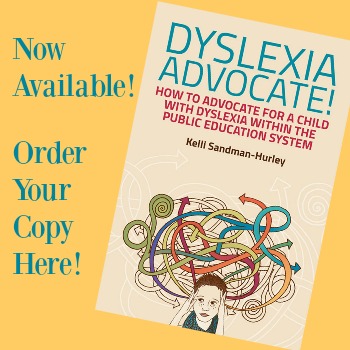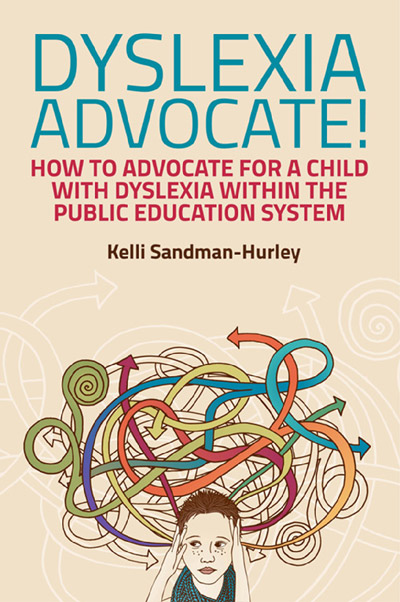 Download the PDF version of this article here.
Download the PDF version of this article here.
Understanding how to teach your students with dyslexia can be a the thing that changes their lives forever. Dr. Kelli Sandman-Hurley shares teaching tips for dyslexia that are both practical and easy to implement.
Teaching Tips for Dyslexia
Teaching Tip #1
Take a moment every day or every teaching session to teach a dyslexic student that the English language is not crazy. For example, at the end of a session, show the student that the l in would is there to show its relationship the word will. The u is included so that would is different from wood. They will appreciate the explanation versus the ‘English is crazy’ approach, because it is not. Remind them that every word has a story and when we figure out the story, we will learn why it is spelled the way it is.

Teaching Tip #2
When a child has trouble decoding a word, make it a spelling question instead of a reading question (thanks to Gina Cooke for this insight that was truly fabulous). For example, if a student cannot decode the word curious, create a word sum (made famous by Pete Bowers) like this: cure + i + ous –> curious. Once they see the word parts they will know why the u is long and the i is long (a connector letter), have them verbally complete the word sum and then have them try to decode the word again.

Teaching Tip # 3
Remind the student with dyslexia, that our written language is meant to represent meaning, not sound…therefore we have to investigate what the words means before we know how it is pronounced. For example, show them that the g in sign is there to mark it’s relationship to signal and signature. You can do this with a word sum (made famous by Pete Bowers) like this: sign + al –> signal and sign + ate + ure —>signature. So, the way a word is pronounced depends on the affixes that are attached to it.

Teaching Tip # 4
When using an OG approach and dictating spelling words, make sure the student is repeating the word before they try to spell. Then make sure they are tapping out the sounds – not the letters- before they write it down. Lastly, if it is a polysyllabic word, make sure they are spelling syllable by syllable.

Teaching Tip #5
Give a student with dyslexia permission to process. Increased processing time will almost always yield positive results. Our students have learned that our society wants immediate responses which is why many students just blurt out any answer or wait just long enough before someone just gives them the answer. Not in my office. They learn to take the time they need to process the question, the words and the answer. It takes time for them to unlearn their immediate response behavior, but they will and they will be relieved.







These are great! Thank you for sharing and keep up the good work!
These are fantastic! thanks for sharing!
Thanks alot for this information
These really are helpful.
Is there any institution in South Africa that can help our kids who are dyslexia
I want to work with my child with spelling over the summer. Any recommendations that a mom can use with one 14 year old boy to help him improve his spelling? A daily plan I can follow but is not “babyish”?
My nephew might have dyslexia and I am worried about how that will affect his ability to learn. Thanks for explaining that it would be smart to break down the word into smaller sections. That is great for me and his parents to be aware of. They might want to find an educator that can help him learn how to read better.